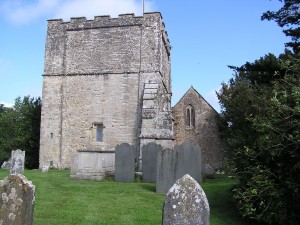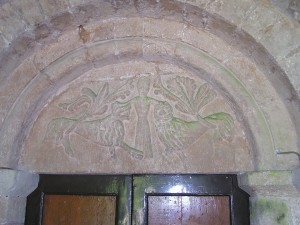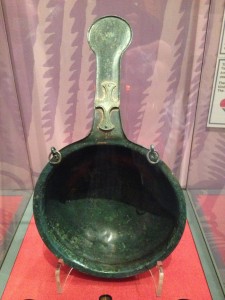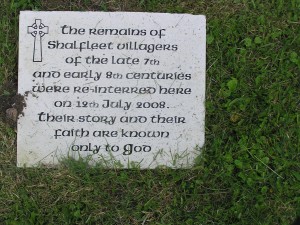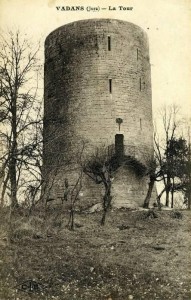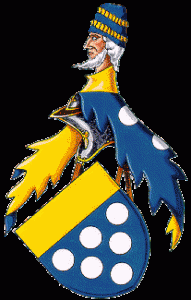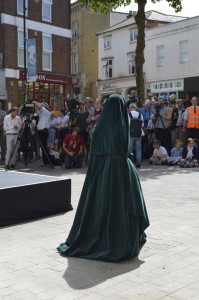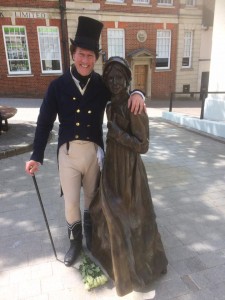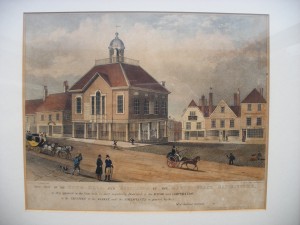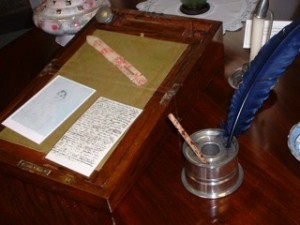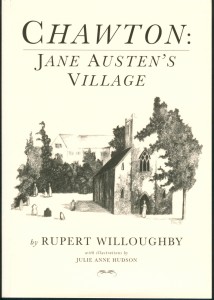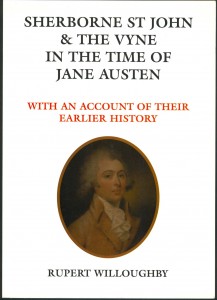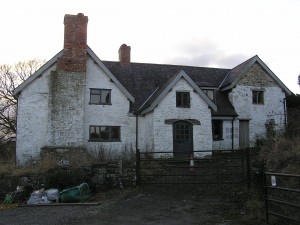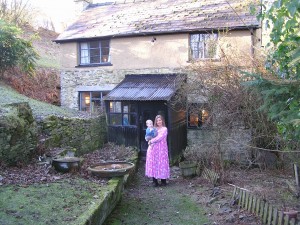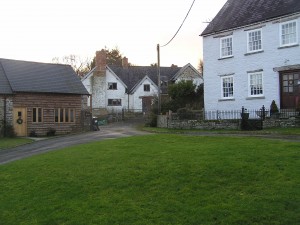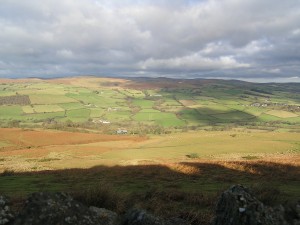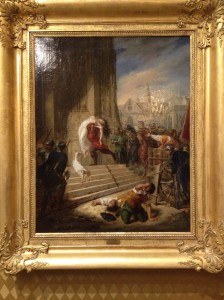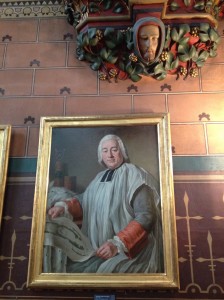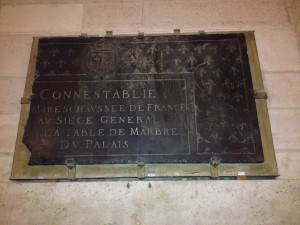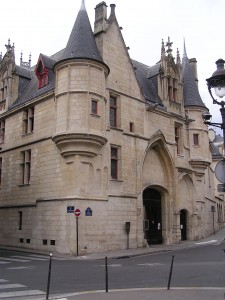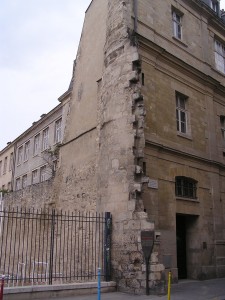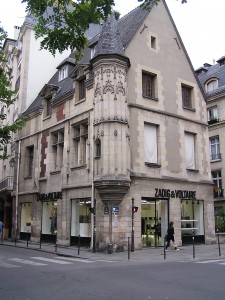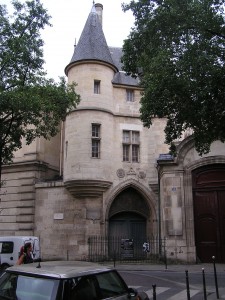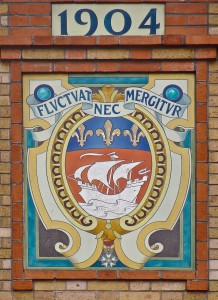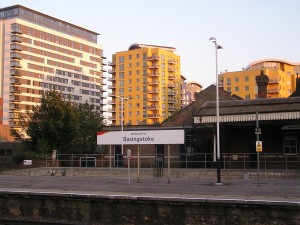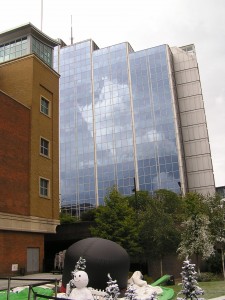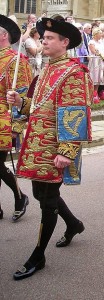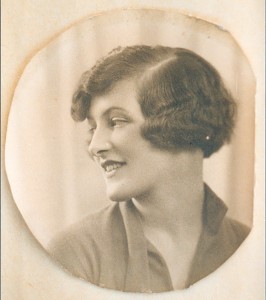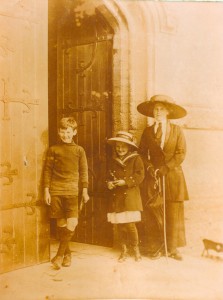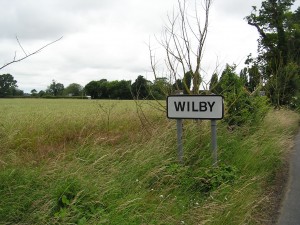
Wilby in Suffolk is flat, featureless and sparsely-populated, with a fine old church, a handful of cottages and a few scattered farmsteads
Most English families are lucky to trace their line back to the reign of Elizabeth I, and mine is no exception. John ‘Wilbie’ of Colchester was described as a yeoman and it was the emigration of his son Thomas to Cornwall, in 1647, that turned us into West Countrymen – Poldarkian characters who in the eighteenth century combined hard farming on the county’s bleak north coast with a little light wrecking. In default of other evidence, can the surname itself tell us about our earlier origins?
The names ‘Wilby’ and ‘Willoughby’ seem always to have been interchangeable, and to have been borne by a number of distinct and unrelated families to indicate their place of origin. There are villages called ‘Willoughby’ in Leicestershire, Lincolnshire, Nottinghamshire and Warwickshire, and others called ‘Wilby’ in Norfolk, Northamptonshire and Suffolk.
Thus the remotest ancestor of the earls and dukes of Ancaster and the lords Willoughby de Eresby, Willoughby de Broke, Willoughby of Parham and Middleton was a certain William Willoughby of Willoughby-in-the-Marsh, Lincolnshire, in the time of Richard I. With their roots firmly in that county, they were entirely unconnected to Willoughbys originating in, say, Norfolk or Suffolk.
The various ‘Willoughbys’ and ‘Wilbys’ were etymologically distinct, too. The Lincolnshire Willoughby is called ‘Wilgebi’ in Domesday Book, a combination of the Old English wilig, for willow, with the Old Scandinavian byr, for a settlement or homestead. The name describes, picturesquely but prosaically, a ‘farmstead by the willows’.
The Wilbys, on the other hand, are called ‘Wilebi’ in Domesday, and are the byrs, or homesteads, of one or more men called Willa, who presumably were Viking marauders of the Danelaw period (A. D. Mills, A Dictionary of English Place-Names, (Oxford, 1991); P.H. Reaney, A Dictionary of British Surnames (1976), pp.383, 385.) As Wilby in Suffolk is the closest of the three villages to Colchester, I believe my ancestors to have originated there, and very probably to have included the eponymous Willa himself.
When might Willa, my putative ancestor, have arrived in England, and what sort of man was he?
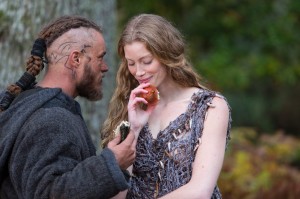
Belying the urbanity of his current-day descendants, Willa was, no doubt, irredeemably uncouth, but charming enough for the first Mrs Willoughby
The Viking raids, the memory of which is seared on our national consciousness, had been sporadic at first. The coming of the Vikings in 793 had been announced, according to the Anglo-Saxon Chronicle, by ‘immense whirlwinds and flashes of lightning, and fiery dragons were seen flying in the air. A great famine followed, and a little after that, on 8 June, the ravages of heathen men miserably destroyed God’s church on Lindisfarne.’ After 835, raids are regularly recorded in the south and west. The attacks soon escalated into a full-scale invasion, with a ‘great army’ landing in 865. It proceeded to conquer Northumbria (867), East Anglia (869) and – reinforced in 871 by a ‘great summer army’ – most of Mercia (874-7). Wessex itself barely escaped after a series of bloody battles in 871, but in 878 was occupied by the Danish king Guthrum, who had surprised Alfred, the new king of Wessex, at Chippenham.
Forced into hiding in the Somerset marshes, Alfred returned to win a decisive victory at Edington. The vanquished Guthrum now accepted baptism and agreed to withdraw, becoming ruler in 880 of the short-lived kingdom of East Anglia. In a subsequent treaty, Guthrum and Alfred, who had beaten off attacks by a third ‘great army’, fixed the boundary between the English and Danish spheres of influence on the line of Watling Street, between London and Chester. The old Saxon kingdoms to the north and east of this line, including East Anglia, disappeared for ever. This was to be the ‘Danelaw’, a wild, politically-fragmented area that was, for the time being, beyond the sphere of any English king.
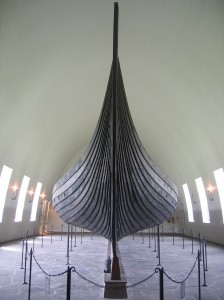
The Gokstad Ship, now at the Viking Ship Museum in Oslo
Ocean-going Viking longboats could accommodate about thirty men, or even fewer if horses, camp followers and enslaved captives were on board, so the number of settlers would not have been excessive. (A ninth-century example of such a ship, discovered in a royal burial mound at Gokstad in Sweden, is largely of oak and is 75 feet 5 inches long, with a keel of sixty feet. It has seating for 32 oarsmen.) The typical raiding fleet after 850 comprised 150 to 250 ships. Yet the impact of the Viking settlement of the Danelaw endures in aspects of our law and language, including much everyday vocabulary (anger, blunder, gift, leather etc.), and even personal pronouns like they, them and their. (James Campbell ed., The Anglo-Saxons (London, 1982), pp.132-4, 147.) Moreover, the place-names of the former Danelaw are, to this day, predominantly Scandinavian, proof of the permanence and extent of the Viking settlement. It has been pointed out, for example, that to the north of Watling Street there are some six hundred place-names ending in -by – and scarcely one to the south of it. (Taylor’s Words and Places, p.38.)
The Anglo-Saxon Chronicle refers (e.g. under the years 876, 877 and 880) to the ‘sharing out of the land’ by the Viking army and their proceeding ‘to plough and support themselves’ (Michael Wood, Domesday: A Search for the Roots of England (London, 1987), p.129). New lords were thus imposed on the native peasantry, and new neighbours who spoke a foreign tongue. Many of them are identifiable, for ‘the former abodes of Grim, Biorn, Thor, Guddar, and Haco go by the names of Grimsby, Burnthwaite, Harroby, Thoresby, Guttersby, and Hacconby’ (Taylor’s Words and Places, p.52), to cite only a few examples.
As long as they were compliant, they may have interfered little with the indigenous population, cultivating virgin land in outlying areas rather than ousting them from existing farms. It is noticeable that many of the ‘-bys’, including that of our Willa, have no church attached to them in 1086, suggesting that they stood apart from the main settlements. In parts of East Anglia, the Vikings spread themselves rather thinly. In Suffolk there are only ‘a few scattered Danish names, chiefly near the coast – such as Orford, Thorpe, Barnby, and Lowestoft’ (Taylor’s Words and Places, p.42), and Willa was daring indeed to have penetrated so far into English territory.
Intent on turning their swords into ploughshares, the colonisers relied for their security on standing armies that were garrisoned in the main towns, and were generally unmolested by the disgruntled English. Their status, however, was privileged, their descendants, many still with Scandinavian names, standing out as free men (sokemen) among the enserfed peasantry of Domesday. Indeed, it is remarkable that the largest concentration of the sokemen in Domesday Book – who comprise only fifteen per cent of the entire population – is in those eastern counties. (Wood, Domesday, pp.129-30, 142, 149.)
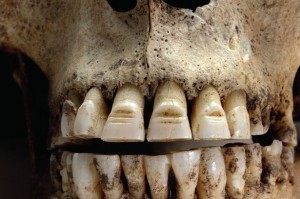
Filed teeth on a Viking skeleton - an unimaginably painful process
Belying the urbanity of his current-day descendants, Willa was, no doubt, irredeemably uncouth. In battle, he would have worn a coat of mail and a plain, conical helmet, but his appearance may have been distinctive in other ways. There is evidence of the sea-rovers enjoying their reputation as louche outsiders, like modern-day punks or Hell’s Angels, whose demeanour alone is unsettling. They wore shoulder-length hair and beards. Some were tattooed from head to foot, others filed and decorated their teeth; some even wore dark eye make-up to make themselves look all the more outlandish and frightening (The Vikings: Life and Legend, ed. Gareth Williams et al. (London, 2014), p.80).
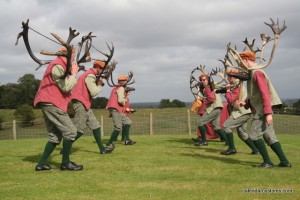
The annual Horn Dance is an immemorial custom at Abbots Bromley in Staffordshire. The horns are reindeer antlers and one has been carbon-dated to the eleventh century. They are evidence of Viking settlers' sending home for their herds
Willa was, quite possibly, a frenzied, homicidal maniac, like the berserkir of later tradition, crazily biting his shield while preparing for battle. The Vikings, moreover, were pitiless in their assaults on the English. When raids from Scandinavia were resumed in the late tenth century, marauding bands of sea-rovers preyed at will on the populace, setting fire to the houses of the English, feasting on their cattle, killing anyone who dared oppose them (Anglo-Saxon Chronicle, s.a. 991). Powerless even to defend their own homes, the English thegns were forced to witness the rape of their womenfolk, sometimes by a dozen Vikings in turn. People watched helplessly as gangs of their fellow Christians were driven to the ships by two or three seamen to be sold as slaves (Sermo Lupi ad Anglos, in English Historical Documents, I (1955), ed. David C. Douglas, pp.857-8). It is too much to hope that Willa would have handled his victims any less roughly. (I am neither proud nor ashamed of my Viking ancestry: are we not all descended from the rapists and murderers of the past?)
Willa may have been the younger son of a lordly family, fated, like so many Scandinavians, to be a wanderer, but with a significant following of his own. The imperative for all was seek out their kinsfolk and connections and to attach themselves to a community, with the great hall of a benevolent lord at its heart – a place for feasting, gambling, gift-giving and entertaining, and for the recitation of heroic poems. Willa must have re-created this for himself at Wilby, perhaps on the site of the present moated manor-house, Wilby Hall, but a key ingredient for his happiness was lacking:
The man has now
laid his sorrows, lacks no gladdeners;
he has a hoard and horses and hall-carousing
and would have everything within an earl’s having
had he my lady with him.
So we are not surprised to discover from a twelfth-century court poem, The Husband’s Message, that the settlers would often send home for their womenfolk, once they had established a safe homestead on which to raise a family (Frank Barlow, Edward the Confessor (London, 1970), pp.19-20). So I imagine the first Mrs Willoughby as a Dane, rather than a local girl, who had crossed the North Sea on a ship loaded with her dowry and her lord’s reindeer herd, never once looking back to the land of her birth.
Appendix: The two Wilbys – relevant Domesday extracts (from Domesday Book (Penguin, 2003), pp.1219 and 1254):
Lands of Robert Malet in Suffolk: ‘In Horham 1 free man, Aelric, by commendation [a form of vassalage] holds 1 carucate of land … In Wilby Leornic holds 20 acres which the same Aelric held. 1 bordar [a cottager, a peasant of lower economic rank than a villein]. It is the same valuation. It is 12 furlongs long and 4 furlongs broad …’
The fief of the Bishop of Thetford in Norfolk: ‘In Wilby, 1 free man with 10 acres … In Wilby, 1 free man by commendation and soke [a specific right of jurisdiction enjoyed by a lord][held] 40 acres. Then as now 1 bordar.’
See also http://www.rupertwilloughby.co.uk/cuttings/the-uniqueness-of-rupert-willoughby/.
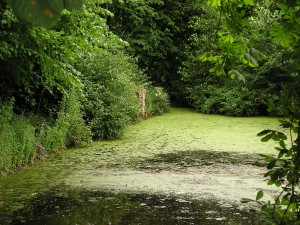
The moat at Wilby Hall, which perhaps occupies the site of Willa's homestead
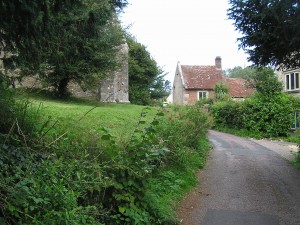
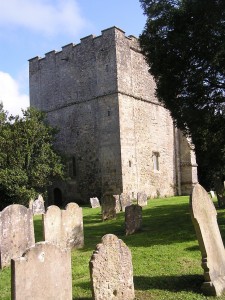 It has been suggested that a tower of such strength was intended as a refuge, for Shalfleet, with its flat shore, was particularly vulnerable to raiders from France (Stone, II, p.52; Brian Mead, The Church of St Michael the Archangel, Shalfleet, 2004). However, what Frenchman in the 1070s would have dared to invade the newly-annexed territory of William the Conqueror, given that he was the ‘strong man’ of northern France and notoriously swift in his retribution? Moreover, how would the frail and elderly have been expected to scramble up the Tower in times of danger? Although it undoubtedly served later as a defence against the French (and was equipped with its own three-pounder gun until 1779), it seems to me most unlikely that that was its original purpose.
It has been suggested that a tower of such strength was intended as a refuge, for Shalfleet, with its flat shore, was particularly vulnerable to raiders from France (Stone, II, p.52; Brian Mead, The Church of St Michael the Archangel, Shalfleet, 2004). However, what Frenchman in the 1070s would have dared to invade the newly-annexed territory of William the Conqueror, given that he was the ‘strong man’ of northern France and notoriously swift in his retribution? Moreover, how would the frail and elderly have been expected to scramble up the Tower in times of danger? Although it undoubtedly served later as a defence against the French (and was equipped with its own three-pounder gun until 1779), it seems to me most unlikely that that was its original purpose.